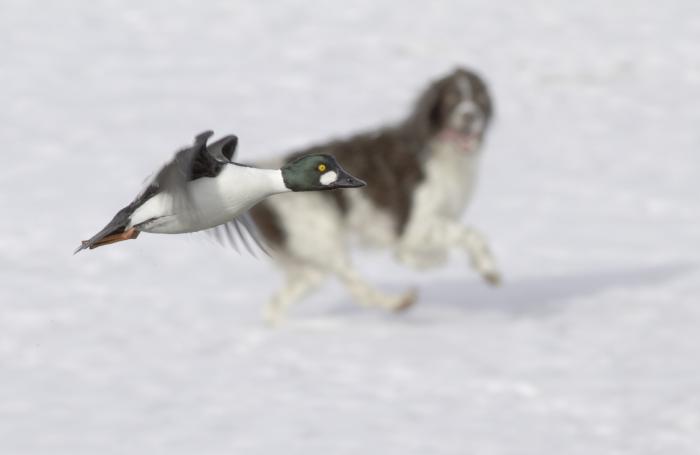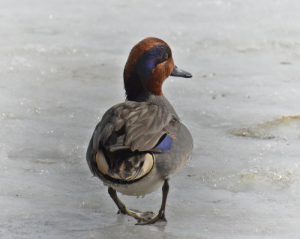

Winter clothes for Canadians normally mean one thing. Lots and lots of layers. But what about the birds that stay home for the winter? How do they do it? Through an amazing array of behavioural physiological adaptations.

Dress in layers. Some birds moult into fresh, thicker plumage (some sparrows increase their plumage by 70%). Birds also fluff their feathers to create warm, insulated air pockets to help add extra coziness. If need be, ducks and geese can lower their body temperature by a few degrees to conserve energy, and shiver to generate heat.
Fancy footwork. What about birds that’re bobbing around in water? They’re feet don’t have feathers! Luckily, ducks and geese can reduce circulation in their feet, to levels just high enough to keep the cells alive. That warm, arterial blood is diverted into the venous blood system, which helps spread warmth around their body.
Changing habits. Lands birds seek shelter from winds; waterfowl tuck their heads into “armpits”; others dive into the snow and hide in burrows or nestle inside tree cavities.
Don’t worry about the birds. They can handle the winter.
Read more about how our hardy bird species tough out the Canadian winter in Canadian Wildlife magazine, Mar + Apr 2016 edition.
Feature photo by Rick Courtney, a photo contest submission.
